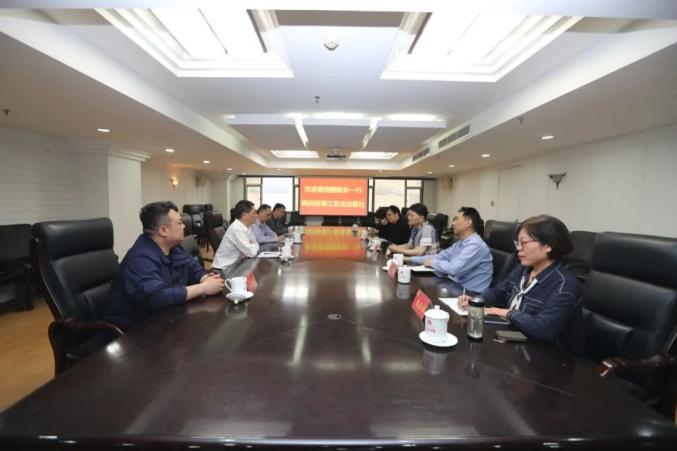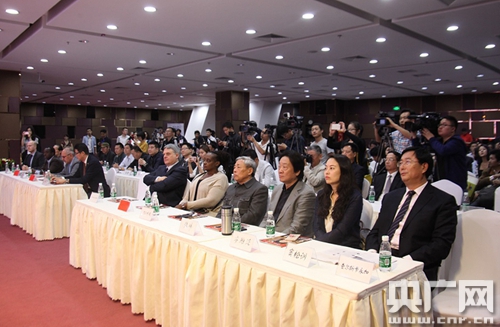China Banking Association Report: RMB Stocks And Bond Assets Held By Overseas Institutions And Individuals Increased By 9.4% Year-on-year
China Banking Association Report: RMB Stocks And Bond Assets Held By Overseas Institutions And Individuals Increased By 9.4% Year-on-year
21st Century Business Herald reporter Yang Xi In October 2023, the Central Financial Work Conference proposed to "steady, prudently and steadily promote the internationalization of the RMB", marking the entry of the internationalization of the RMB into a new stage of development. The Third Plenary Session of the 20th Central Committee of the Communist Party of China once again proposed to promote high-level financial opening
21st Century Business Herald reporter Yang Xi
In October 2023, the Central Financial Work Conference proposed to "steady, prudently and steadily promote the internationalization of the RMB", marking the entry of the internationalization of the RMB into a new stage of development. The Third Plenary Session of the 20th Central Committee of the Communist Party of China once again proposed to "promote high-level financial opening up, steadily and prudently promote the internationalization of the RMB, and develop the offshore RMB market."
In order to implement the decisions and arrangements of the Party Central Committee and adapt to the needs of the international development of the RMB under the new situation and new environment, the government and regulatory departments have introduced a series of relevant policies to promote trade and investment facilitation and high-level opening up of the financial market. Under the dual role of policy leadership and market-driven, the RMB has been used more widely in cross-border settlement and investment and financing, and the level of RMB internationalization has steadily improved.
Recently, the China Banking Association released the "Report on Internationalization of RMB (2024-2025)" (hereinafter referred to as the "Report"). The report systematically sorted out the progress of RMB internationalization policy and the development of RMB cross-border business since 2023, summarized and analyzed the new opportunities for RMB internationalization and the opportunities faced by commercial banks to promote the cross-border use of RMB, and summarized and put forward strategies for commercial banks to promote the cross-border use of RMB and policy suggestions for RMB internationalization. It is reported that this is the eighth time that the China Banking Association has released a report on the internationalization of the RMB since 2016.
The report shows that cross-border RMB business maintains rapid growth, and the global RMB payment function has been further enhanced. According to official data, in 2023 and 2024, the total amount of RMB cross-border payments nationwide was 52.3 trillion yuan and 64.1 trillion yuan, respectively, with year-on-year growth rates of more than 20%; the RMB Cross-border Payment System (CIPS) handled a total of 175.5 trillion yuan in 2024, an increase of 42.6% year-on-year; in November 2023, the RMB became the fourth largest payment currency in the world, and remained fourth at the end of 2024. In addition, the scale of RMB foreign exchange transactions and payment clearing in offshore markets such as Hong Kong, London and Singapore shows a rapid growth trend.
In addition, the report pointed out that the RMB's global trade financing status has leap. By the end of 2024, the RMB became the third largest trade financing currency in the world, second only to the US dollar and the euro. In addition, the RMB has shown "both increasing in quantity and quality" in the securities market. The transaction scale of Hong Kong Stock Connect and Bond Connect hit a new high, and the CIBM and QFII mechanisms continued to be optimized. As of the end of 2024, the total investment in stocks and bonds among the RMB assets held by overseas institutions and individuals was 7.12 trillion yuan, an increase of 9.4% year-on-year.
The report believes that the improvement of the internationalization level of the RMB and the active foreign trade in my country have provided broad space for the banking industry to carry out cross-border RMB business. With the in-depth implementation of the "Belt and Road" initiative, the gradual maturity of the offshore RMB market, and the continuous expansion of the global RMB clearing service network, the construction of financial "going overseas" channels is becoming increasingly perfect, and banks' strategies to promote cross-border use of RMB are further enriched, and dimensions are constantly expanding.
First, promote the cross-border use of RMB in key areas, key regions and key enterprises. Commercial banks continue to explore and promote cross-border RMB use in key areas such as commodity trade, foreign contracting projects, and large-scale complete equipment exports, leading the innovative development of cross-border RMB business; promote the peripheralization and regionalization of RMB in key regional cooperation such as ASEAN and the "Belt and Road" countries, and help coordinated development of RMB internationalization and regional economic integration; actively promote central enterprises, state-owned enterprises and high-quality private enterprises to improve the scale of cross-border RMB use, and serve "going out" enterprises to build a cross-border ecology.
The second is to expand the cross-border use of RMB in new trade formats. Commercial banks actively implement the requirements of the "Notice on Supporting Cross-border RMB Settlement in New Foreign Trade Forms" (Yinfa [2022] No. 139), increase financial support for new foreign trade formats, continuously improve cross-border RMB business policies such as cross-border e-commerce, strengthen policy transmission and system docking, do a good job in business process optimization and product service innovation, continue to empower the real economy, and serve the high-quality development of foreign trade.
The third is to support the innovative development of cross-border RMB in the Free Trade Zone, Shanghai International Financial Center, Hainan Free Trade Port, and the Guangdong-Hong Kong-Macao Greater Bay Area. Commercial banks adapt to local conditions, effectively utilize policy advantages, further optimize product solutions and customer services, and promote the development of high-standard economic and trade, characteristic industries and high-level market opening in the above regions through cross-border RMB business.
Fourth, help enterprises avoid exchange rate risks and reduce financing costs. Commercial banks actively provide diversified RMB cross-border settlement products to help enterprises effectively avoid exchange rate risks; vigorously optimize RMB cross-border financing services to help enterprises reduce financing costs; continue to strengthen cooperation with overseas institutions to promote cross-border use of RMB.
The research team believes that as an important participant in the internationalization of the RMB, banking institutions should follow the trend and seize opportunities to further play the role of market construction and promotion in the internationalization of the RMB. To this end, the banking industry has put forward three policy suggestions based on the existing actual situation.
First, further refine the cross-border RMB facilitation policy. Appropriately coordinate the cross-border policy management requirements of domestic and foreign currencies, clarify the style or content of receipt and payment instructions for enterprises to handle cross-border RMB settlement business under trade, increase the update frequency of the "List of High-Quality Enterprises in Cross-border RMB Settlement", and support banks to classify and manage customers under cross-border RMB business under the premise of controllable risks. The second is to optimize the management mechanism of key business areas of RMB internationalization. Appropriately relax the pilot scope and access conditions for the integrated fund pool of domestic and foreign currencies, and further expand the types and regional scope of assets for cross-border RMB two-way asset transfers. The third is to continue to improve the construction of the offshore RMB market. Enrich the RMB investment and risk hedging tools in the offshore market, expand the upper limit of cross-border interbank financing quotas, formulate differentiated regulatory policies for overseas RMB loans, and promote the establishment of a direct exchange mechanism between the RMB and more small currencies.





